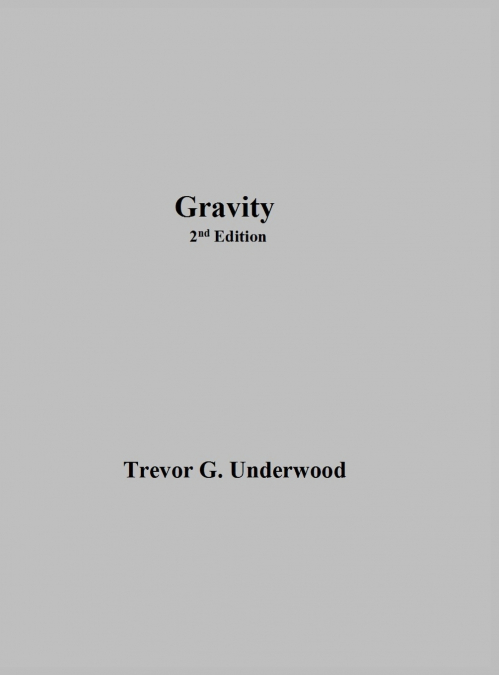
Trevor Underwood
We know less about gravity than any other force. This volume reviews attempts to provide a theoretical explanation for this weak attractive force between matter and how much we know so far. Part I reviews contributions to the understanding of the effects of gravity, starting with extracts from Kepler and Newton. Part I also describes alternative forms of Newton’s law provided by Gauss’s law for gravity, and Poisson’s equation. Part II addresses 'What is Gravity?'. It begins by reviewing Einstein’s unsuccessful attempts at producing a classical unified field theory of electromagnetism and gravity between 1923 until he died in 1955. It moves on to consider quantum entanglement between matter, as a potential source of gravity and to examine the origin of gravity according to the Big Bang theory. In an attempt to answer the question: 'Why does matter attract matter?', facts related to gravity and other forces of nature are reviewed. The underlying cause of gravity remains elusive. From this analysis it is most likely to be found in the initial creation of matter and expansion of the universe, not in quantum theory, nor in a unified theory of electromagnetism and gravity. This appears to suggest that gravity resulted from some form of entanglement between matter after it was driven apart in the expansion of the universe following the Big Bang. The 2nd Edition adds five more papers by Einstein, including two published in 1933 and 1945 in which Einstein questioned the validity of General Relativity, recognizing his introduction of mass into the field equations through the Euler equation as a temporary expedient. It also includes a letter from the author noting that it is not a question of whether gravity is a force or curvature in spacetime; these are purely differences of dimensions in which gravity is described, applicable equally to Newtonian gravity and to General Relativity. This concludes that for practical purposes, gravity is best described in both three and four dimensions by Newtonian gravity, and that Einstein’s theory, which is inconsequential at the speeds with which astronomical objects move relative to each other, can be ignored. This book was published at this time, as a special edition with its own cover, after this letter was rejected by Physical Review Letters with no reason given.